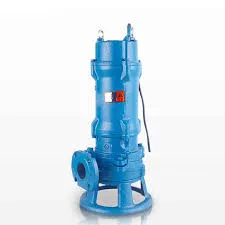Swedish
- Afrikaans
- Albanian
- Amharic
- Arabic
- Armenian
- Azerbaijani
- Basque
- Belarusian
- Bengali
- Bosnian
- Bulgarian
- Catalan
- Cebuano
- Corsican
- Croatian
- Czech
- Danish
- Dutch
- English
- Esperanto
- Estonian
- Finnish
- French
- Frisian
- Galician
- Georgian
- German
- Greek
- Gujarati
- Haitian Creole
- hausa
- hawaiian
- Hebrew
- Hindi
- Miao
- Hungarian
- Icelandic
- igbo
- Indonesian
- irish
- Italian
- Japanese
- Javanese
- Kannada
- kazakh
- Khmer
- Rwandese
- Korean
- Kurdish
- Kyrgyz
- Lao
- Latin
- Latvian
- Lithuanian
- Luxembourgish
- Macedonian
- Malgashi
- Malay
- Malayalam
- Maltese
- Maori
- Marathi
- Mongolian
- Myanmar
- Nepali
- Norwegian
- Norwegian
- Occitan
- Pashto
- Persian
- Polish
- Portuguese
- Punjabi
- Romanian
- Russian
- Samoan
- Scottish Gaelic
- Serbian
- Sesotho
- Shona
- Sindhi
- Sinhala
- Slovak
- Slovenian
- Somali
- Spanish
- Sundanese
- Swahili
- Swedish
- Tagalog
- Tajik
- Tamil
- Tatar
- Telugu
- Thai
- Turkish
- Turkmen
- Ukrainian
- Urdu
- Uighur
- Uzbek
- Vietnamese
- Welsh
- Bantu
- Yiddish
- Yoruba
- Zulu
Telephone: +86 13120555503
Email: frank@cypump.com
nov . 18, 2024 23:27 Back to list
Exploring the Role and Uses of Impellers in Various Industries
Understanding the Functionality and Applications of Impellers
Impellers are crucial components in a variety of engineering applications, particularly in the fields of fluid mechanics and mechanical engineering. These devices serve the primary function of moving fluids, enhancing the flow characteristics and increasing pressure within a system. Their functionality is rooted in the principles of fluid dynamics, where the design and mechanics of an impeller can significantly influence the efficiency and effectiveness of numerous processes.
An impeller is a rotating device equipped with blades, which converts rotational energy from a motor into kinetic energy in the fluid. As the impeller spins, it imparts momentum to the fluid, causing it to move radially outward and, in doing so, creating a low-pressure region at the impeller’s eye. This pressure differential facilitates the continuous drawing in of more fluid from the surrounding area, thus ensuring a steady flow. The efficiency of an impeller is greatly affected by its design, including blade shape, size, and pitch, which must be optimized based on the specific application.
Impellers are commonly used in various applications, such as in pumps, compressors, turbines, and agitators. In centrifugal pumps, impellers are designed to provide the necessary thrust to transport liquids, making them fundamental in industries such as water treatment, agriculture, and chemical processing. In aeration systems, impellers create turbulent flow, which is key to efficient oxygen transfer in wastewater treatment facilities.
'understanding the functionality and applications of impeller ...'

In the realm of aerospace and automotive engineering, impellers play a pivotal role in turbochargers and superchargers. These devices help improve engine performance by increasing airflow into the combustion chamber, ultimately enhancing power output and efficiency. The design of such impellers is critical, as they must withstand high rotational speeds and extreme thermal conditions while maintaining optimal aerodynamic characteristics.
Moreover, the applications of impellers extend into the food and beverage industry, where they are integral to mixing, blending, and dispersing ingredients. In this sector, the choice of impeller design can affect the homogeneity of mixtures and the efficiency of processes such as fermentation and emulsification.
While the basic function of an impeller remains consistent across different applications, the engineering intricacies vary considerably. Computational fluid dynamics (CFD) is often employed during the design phase to simulate fluid flow and optimize impeller performance accurately. This analytical approach enables engineers to make informed decisions about material selection, blade geometry, and operational parameters, ultimately leading to enhancements in efficiency and reductions in energy consumption.
In conclusion, understanding the functionality and applications of impellers is essential for engineers and industry professionals alike. These devices are integral to numerous systems, contributing to the efficiency of fluid movement in a diverse array of industries. As technology advances, the ongoing development of impeller designs is expected to result in even greater efficiencies and capabilities, reinforcing their vital role in modern engineering and industrial processes.
-
China Small Slurry Pump Manufacturer - High Efficiency Small Centrifugal Slurry Pumps for Mining & Industry
NewsJun.24,2025
-
Custom Drilling Mud and Slurry Pump Supplier - High Efficiency, Tailored Solutions
NewsJun.10,2025
-
Supply Vertical Submersible Sewage Pump High-Efficiency WQ/QW Pumps Supplier
NewsJun.10,2025
-
Premium Sewage Ejection System & Pumps Efficient Waste Removal
NewsJun.09,2025
-
Premium Wholesale Slurry Pump Impellers Durable & Efficient Slurry Handling
NewsJun.09,2025
-
Top Sewage Pump Companies Durable Industrial Solutions for Efficiency
NewsJun.09,2025










